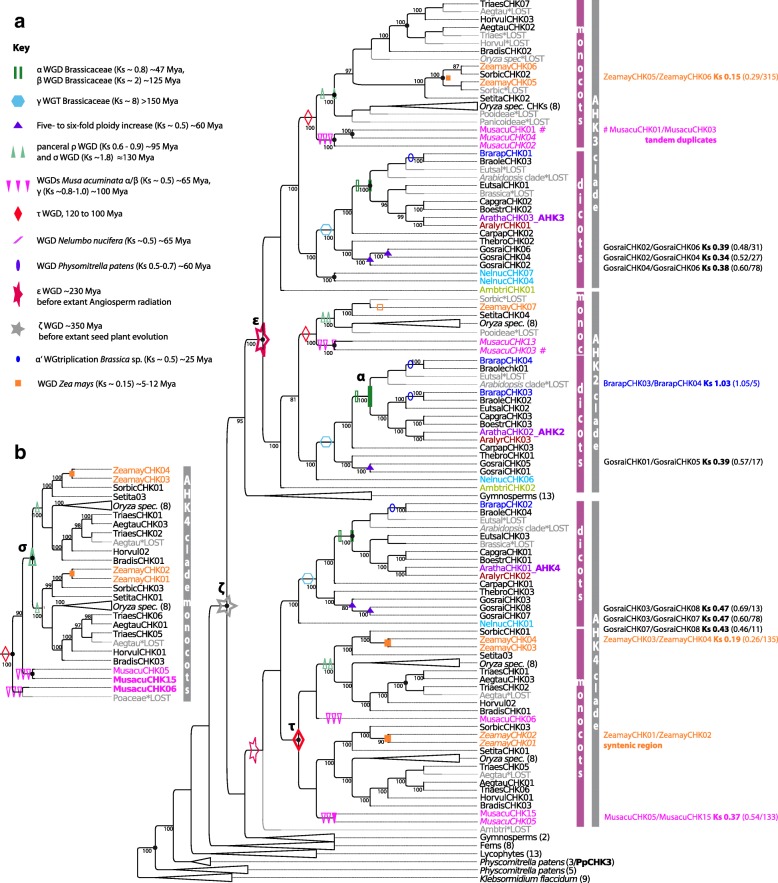Fig. 2.
Reconciled tree of CHK encoding sequences. a Reconciled Bayesian tree of CHK encoding sequences (codon substitution model). Gene tree reconciliation includes rearrangement of branches with a support of less than 70% (posterior probability). Branch support of > 70% is given in the tree. Original Mr. Bayes tree see. Additional file 3: Figure S2. The optimization criterion for reconciliation was the number of duplications and losses. The three dominant clades of CHKs are indicated. Duplicates inferred to be lost are labeled (*LOST) and are given in gray. Of note, most duplicates resulting from WGDs that were lost thereafter were not detected. Thus, WGD events that occurred during CHK evolution are indicated with empty symbols (see key) on the corresponding branches, if resulting duplicates were not retained. If, according to phylogenetic inference plus syntenie/collinearity relationships, a copy resulting from a WGD duplication was retained, duplication nodes are labeled with the corresponding filled symbols, and Ks distances between the gene pairs are given. Furthermore, the median Ks, and the number of gene pairs of the total collinear region is given in brackets. Further duplications inferred from phylogenetic analysis are labeled with a black dot, and if phylogenetic inference indicates that a WGD is involved, the node is also labeled with an empty symbol. Additionally, tandem duplicates of M. acuminata are specified and labeled with the symbol #. Possible CHK pseudogenes from M. acuminata and Z. mays are given in italic. b Alternative tree topology within the AHK4 clade (monocots) of the reconciled maximum likelihood tree (codon substitution)

